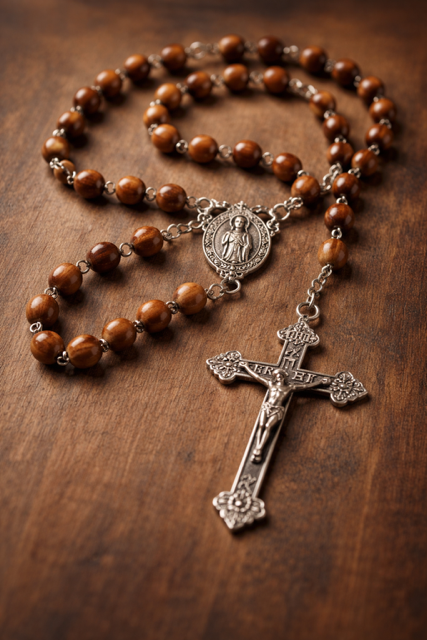The Rosary
The Rosary is one of the most cherished prayers of the Catholic Church. It is a meditative prayer that combines vocal prayer with quiet reflection on the central mysteries of the Christian faith. Through the Rosary, the faithful are invited to contemplate the life, death, and resurrection of Jesus Christ, guided by the example and intercession of the Blessed Virgin Mary.
The Rosary is traditionally prayed using a string of beads, which serve as a practical aid to prayer. These beads are arranged to guide the sequence of prayers, beginning with the crucifix and continuing through five decades. Each decade consists of one Our Father, ten Hail Marys, and a Glory Be, allowing the person praying to remain focused and prayerful throughout.
At the heart of the Rosary are the Mysteries, which are key moments in the life of Christ and Mary drawn from the Gospel. There are four sets of Mysteries: the Joyful, Sorrowful, Glorious, and Luminous Mysteries. Each set highlights a different aspect of salvation history, from Christ’s Incarnation and public ministry, through His Passion and death, to His Resurrection and the glory of heaven. By meditating on these Mysteries, those who pray the Rosary enter more deeply into the Gospel message.
Although the Rosary includes prayers addressed to Mary, it is fundamentally Christ-centred. Catholics honour Mary because she leads us to her Son, as she did throughout her life. In the Hail Mary, we ask for her prayers and example as we strive to follow Christ more faithfully. The Rosary thus strengthens our relationship with Jesus while fostering trust, humility, and perseverance in faith.
The Rosary may be prayed privately or in community, slowly or simply, and is suitable for people of all ages. Many find it a source of peace, comfort, and spiritual renewal, especially in times of joy or difficulty. As a prayer rooted in Scripture and tradition, the Rosary continues to nourish the spiritual life of the Church and remains a powerful means of drawing closer to God.




